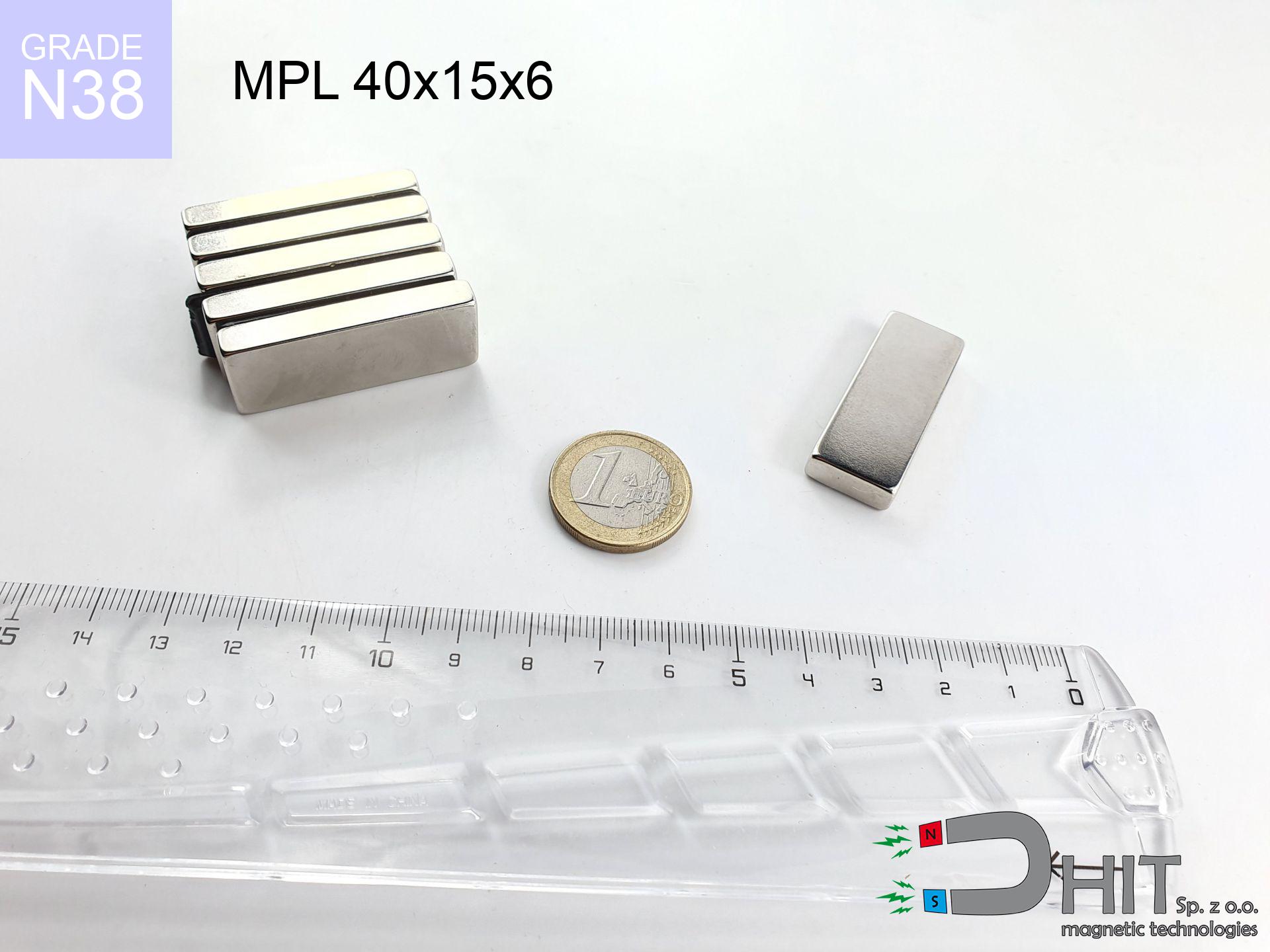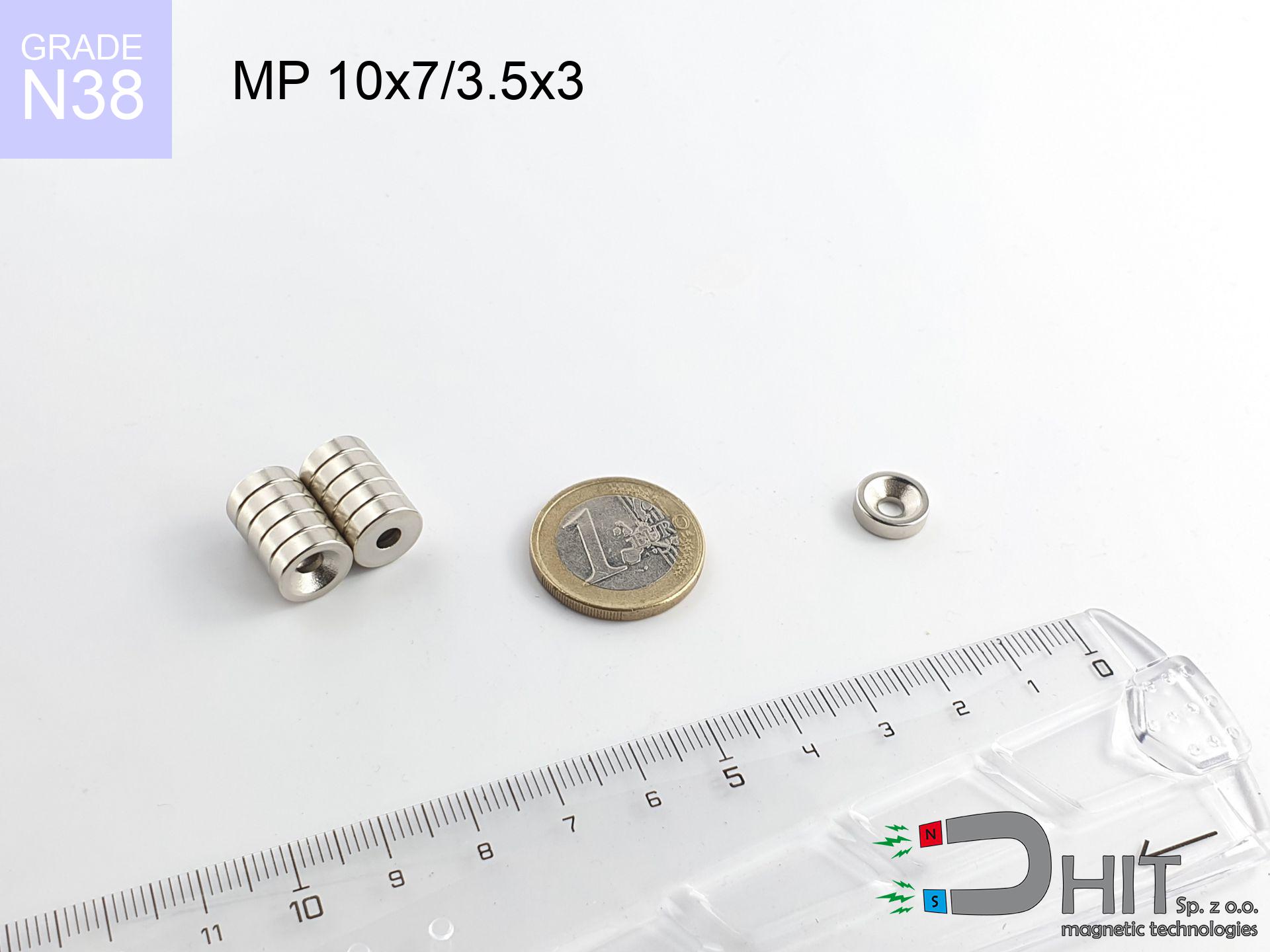UMGGZ 22x6 [M4] GZ / N38
rubber magnetic holder external thread
catalog number 340310
GTIN: 5906301814726
diameter Ø
22
mm [±0,1 mm]
height
6
mm [±0,1 mm]
capacity ~
5.10 kg / 50.01 N
max. temperature
≤ 80
°C
catalog number 340310
GTIN: 5906301814726
diameter Ø
22 mm [±0,1 mm]
height
6 mm [±0,1 mm]
capacity ~
5.10 kg / 50.01 N
max. temperature
≤ 80 °C
7.38 ZŁ gross price (including VAT) / pcs +
6.00 ZŁ net price + 23% VAT / pcs
bulk discounts:
need more quantity?Want to bargain?
Call us tel: +48 888 99 98 98 or write via contact form on the contact page. You can check the strength and the shape of magnet in our force calculator magnetic mass calculator
Orders placed by 2:00 PM will be shipped on the same business day.
Specification: rubber magnetic holder external thread 22x6 [M4] GZ / N38
Magnetic properties of the material N38
Physical properties of sintered neodymium magnets Nd2Fe14B
Product suggestions
Advantages and disadvantages of neodymium magnets NdFeB.
Apart from immense strength, neodymium magnets have the following advantages:
- They do not lose strength over time. After 10 years, their power decreases by only ~1% (theoretically),
- They are extremely resistant to demagnetization by external magnetic sources,
- Thanks to the shiny finish and nickel, gold, or silver coating, they have an aesthetic appearance,
- They possess very high magnetic induction on the surface of the magnet,
- Thanks to their high temperature resistance, they can operate (depending on the form) even at temperatures up to 230°C and above...
- Due to the option of accurate forming and adaptation to individual needs – neodymium magnets can be produced in many variants of shapes or sizes, which amplifies their universality in usage.
- Significant importance in the industry of new technologies – find application in hard drives, electric drive mechanisms, medical apparatus or other highly developed apparatuses.
Disadvantages of neodymium magnets:
- They can break as they are fragile when subjected to a powerful impact. If the magnets are exposed to impacts, it is suggested using magnets in a metal holder. The steel housing in the form of a holder protects the magnet from impacts and simultaneously increases its overall strength,
- Magnets lose their power due to exposure to high temperatures. In most cases, when the temperature exceeds 80°C, these magnets experience permanent reduction in strength (although it is worth noting that this is dependent on the shape and size of the magnet). To avoid this problem, we offer special magnets marked with the [AH] symbol, which exhibit high temperature resistance. They can operate even at temperatures as high as 230°C or more,
- Due to their susceptibility to corrosion in a humid environment, we suggest using waterproof magnets made of rubber, plastic, or other moisture-resistant materials when using them outdoors,
- The use of a cover or a magnetic holder is recommended due to the limited possibilities of manufacturing threads or complex shapes in the magnet
- Possible danger to health from tiny fragments of magnets can be dangerous, if swallowed, which is crucial in the context of child safety. It's also worth noting that miniscule components of these products can be problematic in medical diagnosis when they are in the body.
Safety Guidelines with Neodymium Magnets
People with pacemakers are advised to avoid neodymium magnets.
Neodymium magnets produce strong magnetic fields that can interfere with the operation of a heart pacemaker. However, if the magnetic field does not affect the device, it can damage its components or deactivate the device when it is in a magnetic field.
Do not bring neodymium magnets close to GPS and smartphones.
Neodymium magnets are a source of intense magnetic fields that cause interference with magnetometers and compasses used in navigation, as well as internal compasses of smartphones and GPS devices.
Neodymium magnets can become demagnetized at high temperatures.
Despite the fact that magnets have been found to maintain their efficacy up to temperatures of 80°C or 175°F, it's essential to consider that this threshold may fluctuate depending on the magnet's type, configuration, and intended usage.
The magnet coating contains nickel, so be cautious if you have a nickel allergy.
Studies show a small percentage of people have allergies to certain metals, including nickel. An allergic reaction often manifests as skin redness and rash. If you have a nickel allergy, you can try wearing gloves or simply avoid direct contact with nickel-plated neodymium magnets.
Neodymium magnets should not be in the vicinity youngest children.
Neodymium magnets are not toys. You cannot allow them to become toys for children. Small magnets pose a serious choking hazard or can attract to each other in the intestines. In such cases, the only solution is to undergo surgery to remove the magnets, and otherwise, it can even lead to death.
Dust and powder from neodymium magnets are flammable.
Do not attempt to drill into neodymium magnets. Mechanical processing is also not recommended. If the magnet is crushed into fine powder or dust, it becomes highly flammable.
Neodymium magnetic are known for being fragile, which can cause them to become damaged.
In the event of a collision between two neodymium magnets, it can result in them getting chipped. They are coated with a shiny nickel plating similar to steel, but they are not as hard. In the case of a collision between two magnets, there can be a scattering of small sharp metal fragments in different directions. Protecting your eyes is essential.
Neodymium magnets are primarily characterized by their significant internal force. They attract to each other, and any object that comes in their way will be affected.
Neodymium magnets jump and touch each other mutually within a distance of several to around 10 cm from each other.
Neodymium magnets are over 10 times stronger than ferrite magnets (the ones in speakers), and their power can surprise you.
To handle magnets properly, it is best to familiarize yourself with our information beforehand. This will help you avoid significant harm to your body and the magnets themselves.
Make sure not to bring neodymium magnets close to the TV, wallet, and computer HDD.
Strong fields generated by neodymium magnets can damage magnetic storage media such as floppy disks, credit cards, magnetic ID cards, cassette tapes, video tapes, or other similar devices. In addition, they can damage televisions, VCRs, computer monitors, and CRT displays. Avoid placing neodymium magnets in close proximity to electronic devices.
To illustrate why neodymium magnets are so dangerous, see the article - How dangerous are powerful neodymium magnets?.

![UMGGZ 22x6 [M4] GZ / N38 UMGGZ 22x6 [M4] GZ / N38](https://cdn3.dhit.pl/graphics/products/umg-22x6-m4-gz-hiw.jpg)



![magnetic separator 32x425 [2xM8] / N52 magnetic separator 32x425 [2xM8] / N52](https://cdn3.dhit.pl/graphics/products/sm-32x425-2xm8-tas.jpg)

